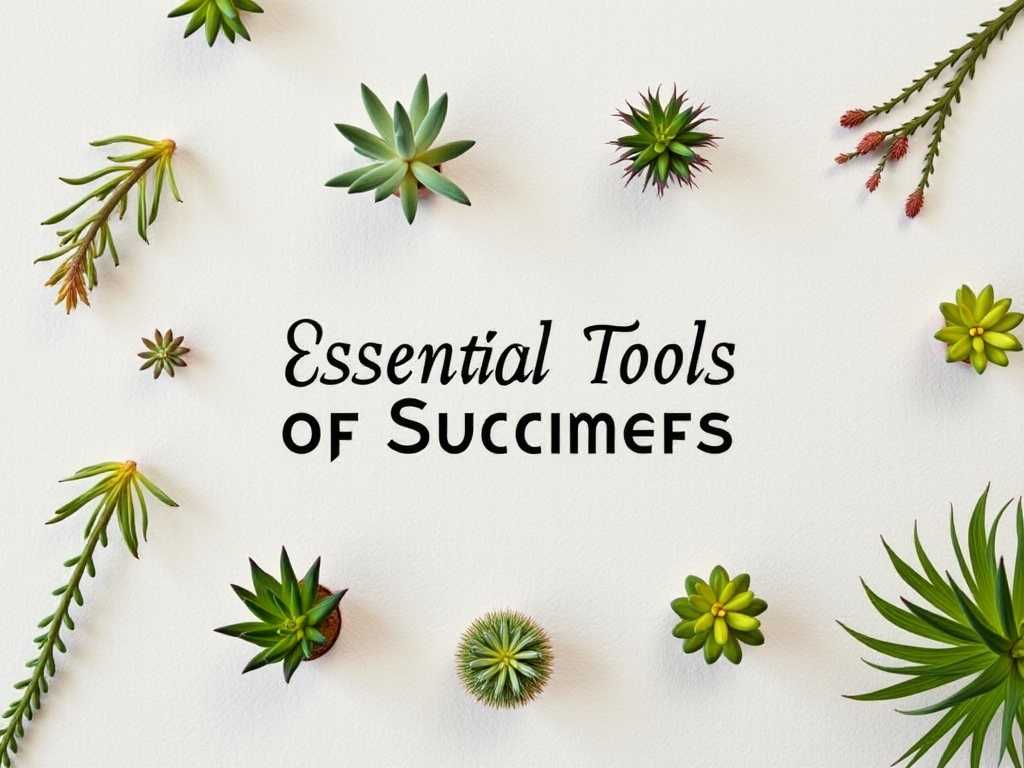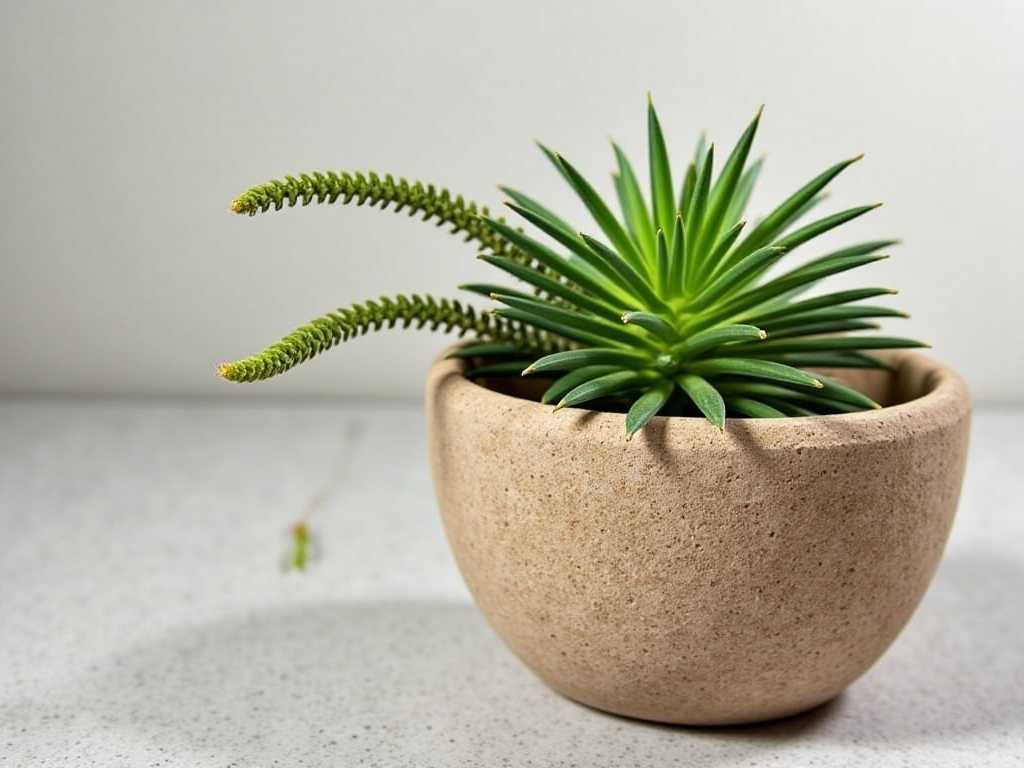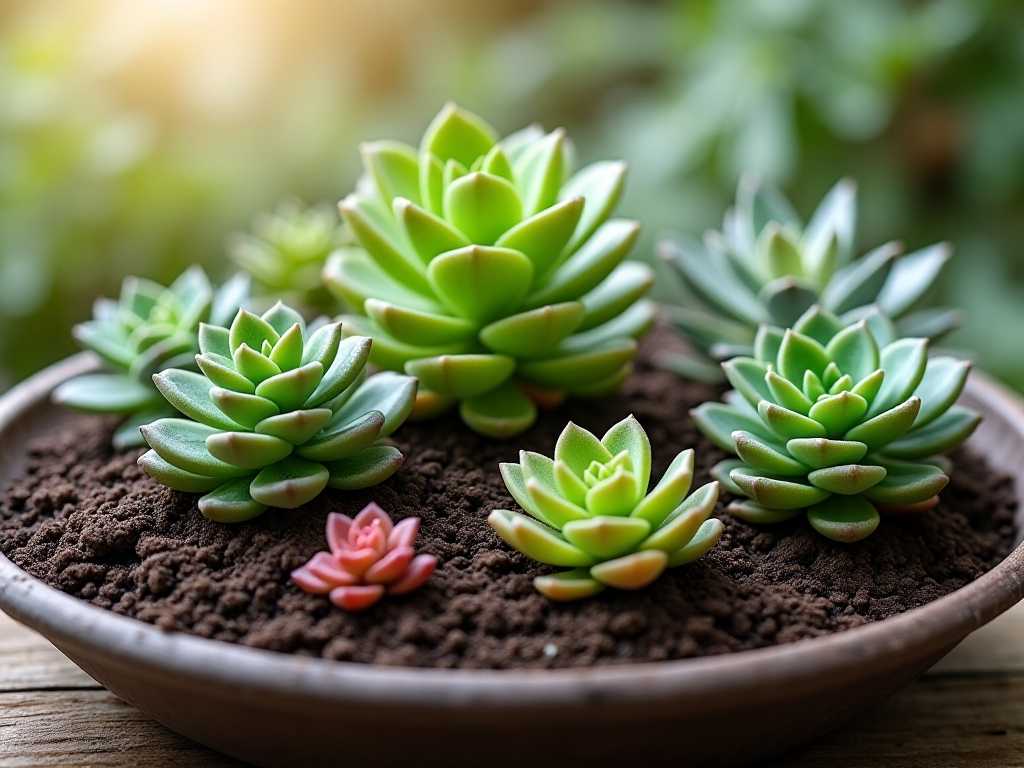Essential Tools for Succulent Care Beginners
Why the Right Tools Matter for Succulent Beginners
Must-Have Tools for Succulent Care (With Expert Recommendations)
1. Precision Tweezers (Pointed or Blunt-Tip)
What to Look For
Tip Type: Choose pointed tweezers for thin-leaf succulents (like string of pearls) or blunt-tip tweezers for thick-leaf varieties (like jade plants). Blunt tips prevent accidental punctures, while pointed tips reach narrow gaps.
Length: Opt for 4–6 inch tweezers—longer ones are hard to control, and shorter ones don’t reach deep into rosettes.
Material: Stainless steel tweezers are rust-resistant and sturdy. Avoid plastic tweezers, which bend easily and can snap when pressing down.

Top Recommendations for Beginners
Fiskars Precision Tweezers: Blunt-tip design, lightweight, and under $10. Perfect for most beginner succulent collections (jade, echeveria).
Vivosun Pointed Succulent Tweezers: Sharp but safe tips, with a non-slip grip. Ideal for string of pearls, haworthia, or planting small cuttings—costs around $12.
How to Use Them (Without Damaging Leaves)
Hold the tweezers at a 45-degree angle to the plant. Grip dead leaves near the base (not the healthy stem) and pull gently—if the leaf doesn’t come off easily, wait a few days (it’s not ready to shed).
For planting cuttings: Use tweezers to lower the cutting into the soil, then pat soil around the base—don’t press too hard, as succulent roots are fragile.
Clean tweezers after use with a damp cloth to remove sap or soil—this prevents cross-contamination between plants.
2. Fine-Mist Spray Bottle (For Watering & Cleaning)
What to Look For
Mist Quality: Choose a bottle with an adjustable nozzle that sprays a “fog-like” mist (not large droplets). Large droplets sit on leaves and cause rot, especially in humid climates.
Capacity: A 8–12 ounce (240–350 ml) bottle is ideal—small enough to hold with one hand, large enough to water 5–6 small succulents.
Durability: Look for a bottle with a metal nozzle (plastic nozzles clog easily) and a leak-proof lid. Avoid cheap plastic bottles that crack in direct sunlight.
Top Recommendations for Beginners
EcoTools Fine-Mist Spray Bottle: Adjustable nozzle, BPA-free plastic, and under $8. The mist is gentle enough for lithops and small cuttings.
Harris Professional Spray Bottle: Metal nozzle, leak-proof design, and holds 12 ounces. Great for larger succulent collections—costs around $15.
Expert Tips for Use
Mist only when the top 1 inch of soil is dry (succulents hate soggy soil). For mature plants, water deeply every 2–3 weeks instead of misting—misting is best for cuttings or tiny succulents.
When cleaning leaves: Hold the spray bottle 6–8 inches away from the plant and mist lightly. Wipe leaves with a soft cloth afterward to remove dust—don’t rub hard, as succulent leaves scratch easily.
Avoid using tap water if possible—chlorine and fluoride build up on leaves over time. Use filtered or rainwater instead, says theAmerican Society for Horticultural Science (ASHS).
3. Mini Soil Loosener (With Thin Tines)
What to Look For
Tine Design: Choose a loosener with 3–4 thin, flexible tines (1–2 inches long). Thick tines compact soil further, while too many tines damage shallow roots.
Size: The entire tool should be 5–7 inches long—small enough to fit in tight pots without hitting the plant.
Handle: A rubber or foam handle reduces hand fatigue, especially if you have multiple succulents.
Top Recommendations for Beginners
Gardena Mini Soil Loosener: Flexible stainless steel tines, ergonomic handle, and under $12. Perfect for all succulent pot sizes.
Fiskars SoftGrip Hand Rake: Lightweight, with curved tines that glide through soil. Great for beginners who struggle with heavy tools—costs around $10.
How to Use It (Without Harming Roots)
Use the loosener once every 2 weeks, or after watering (when soil is slightly damp). Gently scrape the top 0.5–1 inch of soil—never dig deeper, as succulent roots grow in the top 2 inches of soil.
Focus on the edges of the pot first—soil compacts most here. Work your way toward the center, being careful not to touch the plant’s base.
If soil is very compacted, add a pinch of perlite after loosening—this helps keep soil aerated longer.
4. Sharp Pruning Snips (For Trimming & Propagating)
What to Look For
Blade Type: Bypass snips (like small scissors) are best—they cut through stems cleanly without crushing. Avoid anvil snips, which press down on tissue and cause damage.
Size: Choose snips 4–5 inches long—large enough to cut stems up to 0.5 inches thick, small enough to handle tiny succulents.
Locking Mechanism: A safety lock keeps the blades closed when not in use—important for beginners to avoid accidents.
Top Recommendations for Beginners
Fiskars Micro-Tip Pruning Snips: Sharp stainless steel blades, locking mechanism, and under $15. Perfect for trimming leggy jade plants or propagating echeverias.

Vivosun Precision Pruning Shears: Non-slip grip, easy to clean, and cuts through thick stems (like aloe vera) too. Great for beginners with mixed succulent collections—costs around $18.
How to Use Them Safely (With Expert Advice)
Sterilize blades before use: Wipe them with 70% isopropyl alcohol to kill bacteria. “This is the single most important step to prevent disease,” says Dr. Emily Carter, a plant pathologist at the University of Arizona.
When trimming: Cut stems at a 45-degree angle, 0.5 inches above a leaf node (new growth will sprout here). For dead growth, cut as close to the base as possible without touching healthy tissue.
For propagation: Cut a 2–3 inch stem, remove the bottom leaves, and let the cut end dry for 1–2 days (until it calluses). Plant in well-drained soil—snips ensure the cut is clean, which boosts rooting success.
5. Succulent Watering Can (With Narrow Spout)
What to Look For
Spout Length: A spout 5–7 inches long lets you reach the soil in deep pots without splashing leaves. Avoid short spouts—they’re hard to control.
Capacity: A 1–2 quart (1–2 liter) can is ideal. Larger cans are heavy, while smaller cans require refilling too often.
Transparent Body: A clear plastic or glass body lets you see how much water you’re using—helping beginners avoid overwatering.
Top Recommendations for Beginners
Vremi Small Watering Can: Long narrow spout, transparent body, and under $15. Perfect for windowsill succulents and small pots.
Haws Mini Watering Can: Brass spout (doesn’t clog), durable design, and trusted by professional succulent growers. Great for beginners who want a long-lasting tool—costs around $25.
Expert Tips for Use
Water only when the soil is completely dry (stick your finger 2 inches into the soil—if it’s dry, water). For most succulents, this is every 2–4 weeks, depending on humidity.
Tilt the spout so water flows slowly—fast pouring washes away soil and exposes roots. Stop watering when water drains out the bottom of the pot—this ensures the root zone is fully hydrated.
Never water the rosette (the center of the plant)—water pooling here causes rot. Focus on the soil around the base of the plant instead.

发表评论